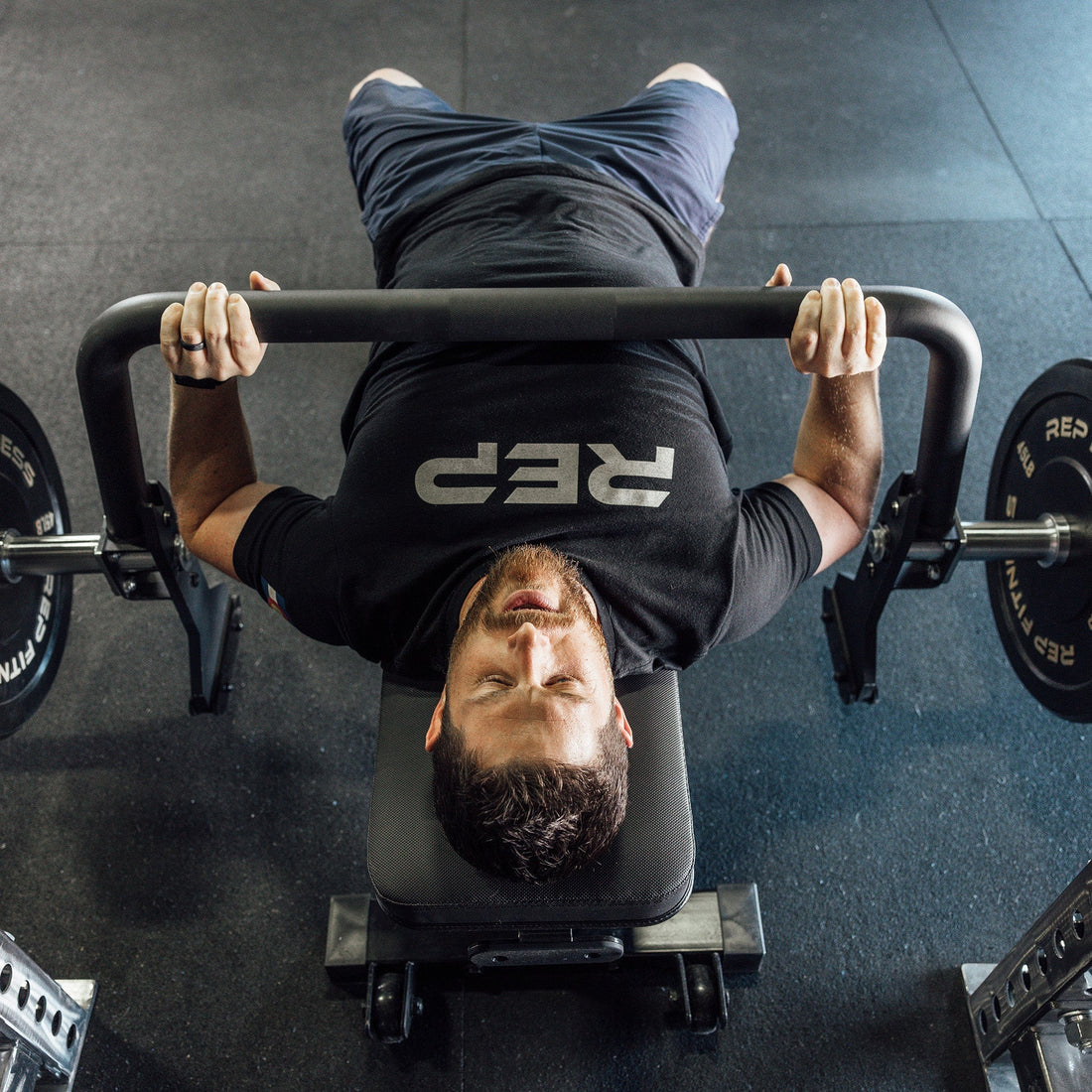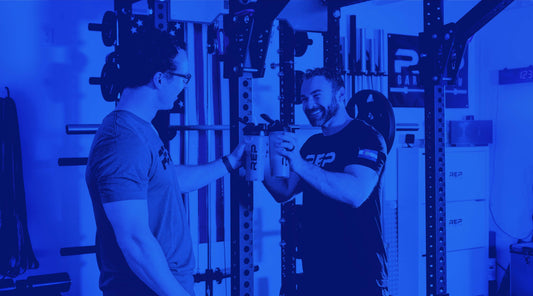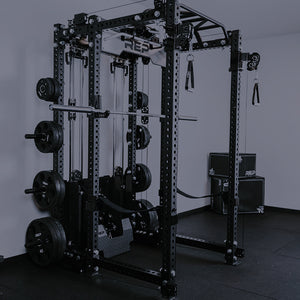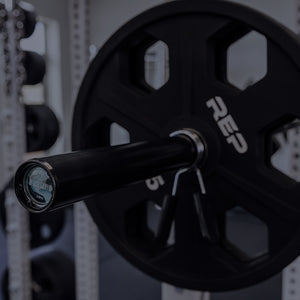
You’ve probably seen it at the gym: the unique-shaped bar that can look intimidating to use if you’ve never tried it before. But turns out, it’s super easy to use – and incredibly beneficial. This bar, called a trap bar or hex bar, is arguably one of the most underrated specialty bars out there.
Due to its shape, the trap bar allows for equal weight distribution around the body, instead of just in front like a regular deadlift. The bar also features dual, neutral-grip handles (standard and raised).
The Open Trap Bar is even more useful and versatile.
The open-sided frame of an Open Trap Bar allows the lifter to step in and out of the bar and doesn’t limit the lower body range of motion. This makes the bar functional for a wide variety of movements, such as lunging and carrying.
Here are 14 reasons to add an Open Trap Bar to your strength-training routine.
How to Use an Open Trap Bar

To use an Open Trap Bar, start by stepping into the open space of the bar and positioning your feet shoulder-width apart. Bend at the hips and knees, keeping your back straight, and grasp the handles with a neutral grip (palms facing in). Engage your core, then drive through your heels to lift the bar by extending your hips and knees, keeping the bar close to your body. Stand fully upright, then lower the bar back down under control, maintaining good posture throughout the movement.
Learn more about the Open Trap Bar and other specialty barbells here.
Benefits of the Open Trap Bar
1. LESS STRESS ON THE LUMBAR SPINE
One of the biggest benefits of the Open Trap Bar is that it allows for a more upright torso than conventional deadlifts, thereby reducing strain and stress on your lumbar spine. With a trap bar deadlift, the weight is closer to the midline. This makes the bar great for people who want to still perform a deadlift-like pull but reduce the demand on their lower back, due to pain, injury, or the desire to mix up training. This can help you build more back strength before (or in addition to) tackling a straight bar deadlift. The Open Trap Bar can also be an alternative for back squats; work your legs without loading the spine from the top.
2. IMPROVES YOUR DEADLIFTS
Open Trap Bar deads can help improve the technique and strength of straight bar deadlifts. Some lifters tend to hyperextend their lockout (with a slight backward lean) due to pulling the bar up against their thighs and to counterbalance the bar. This can lead to an increased risk of injury to the back. The Open Trap Bar reduces that hyperextension (it's awkward to lean back like that without falling over). An Open Trap Bar can help train you to not hyperextend and understand what a neutral spine feels like, so you’ll perform straight bar deadlifts more safely.
3. KEEPS YOU LIFTING WHEN YOU HAVE LIMITATIONS
The Open Trap Bar can allow lifters to do pulls when they are rehabbing or have a reduced range of motion. Want to work your quads in a compound movement but can’t squat to depth? An Open Trap Bar can provide an alternative.
4. GREAT FOR QUADS
The Open Trap Bar demands more quad than conventional deadlifts. It also hits your glutes and hamstrings. While it also targets your back, it works your legs more than a conventional deadlift.
5. EASY TO LEARN
Open Trap Bar deadlifts are easier to learn and perform with good form than straight bar deadlifts. The neutral grip combined with the center of gravity being in line with your body (instead of in front of it) makes it easier to keep a neutral spine. New lifters and people not comfortable with their deadlift form (whether due to mobility, body proportions, or a mental block) can pretty easily find quick success with an Open Trap Bar. You probably won’t need to perfect your form for weeks or months before adding working weight on an Open Trap Bar. You can get right to business.
6. DIFFERENT WEIGHT DISTRIBUTION
The weight with an Open Trap Bar sits to the sides of your body, not in front of you. You step into the open-hex shape, sit back, and pick it up, rather than bending forward to grip the bar. This shifts the feeling of the lift and is also great functional strength training.
7. HEAVIER LOADS/MORE POWER
Most people can lift about 5-10% heavier on an Open Trap Bar (with the low handles) than a straight bar – and even more with the high handles. Velocity has also been shown to be higher.
8. GROWS YOUR VERTICAL
Loaded, vertical jumps with an Open Trap Bar can improve your jump power in other sports.
9. MORE FORGIVING FOR GRIP
Neutral handles (palms facing inward) are easier to grip than double overhand on a barbell, when grip strength can be a performance limitation. So, you can train your legs and back harder before your grip stops you. In addition, the neutral handles on an Open Trap Bar eliminate mixed grip and its related imbalances (and the risk of bicep tears or strains). And no need to suffer through a painful hook grip.
10. IMPROVE YOUR OLY LIFTS
An Open Trap Bar can help Olympic weightlifters train their muscles for a clean pull, which requires a more upright torso position than a conventional deadlift allows.
11. EASIER ON THE SHINS
If you want to keep the bruises and blood off your shins (or protect your workout pants), the Open Trap Bar eliminates the contact between your skin and the knurling of a straight barbell.
12. GREAT FOR TALL LIFTERS
Tall lifters (6’ and above) can struggle with keeping a flat back in deep angles, especially tall lifters with poor mobility. An Open Trap Bar provides a compound pulling exercise with less demand on mobility and flexibility.
13. SURPRISINGLY VERSATILE
An Open Trap Bar is more than just pulls. You can use it for all kinds of other exercises, such as neutral-grip presses (chest and overhead), floor presses, farmer’s carries, bent-over rows, push-ups, planks, Romanian deadlifts, rack pulls, shrugs, and more. Without the front bar in the way, you can also use the trap bar for lunge-style movements, including Bulgarian split squats. For home gym owners who already have weight plates, this allows you to do lunges and many other exercises without having to buy a whole set of dumbbells.
See below for more Open Trap Bar exercises.
14. CORE ENGAGEMENT
Open Trap Bar Exercises



Aimee Heckel, CPT, is a health and fitness journalist with over 20 years of experience. She set an all-time world-record deadlift in her division across all powerlifting federations at Mr. Olympia. In addition, she earned a national deadlift record and 18 Colorado state records. Heckel also has nine world records in grip sport, a pro card in natural figure bodybuilding, four first-place bodybuilding titles, and was named IPE Ms. Colorado Figure.

NEWSLETTER SIGNUP
Product launch information, promotions, blogs, and REP news.












